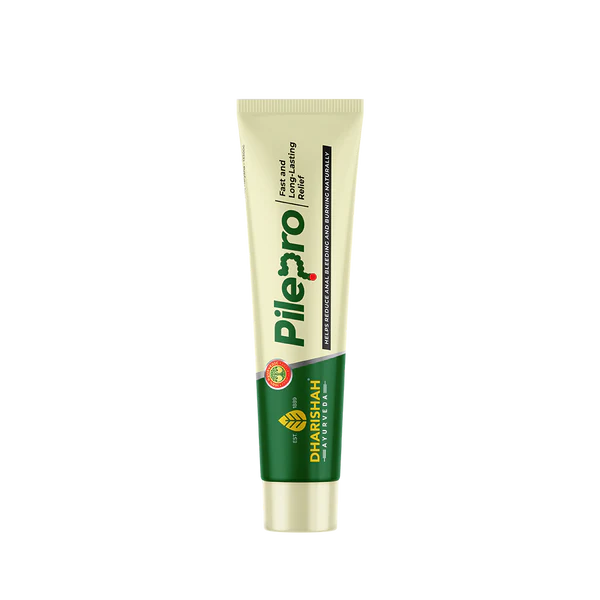How to Apply Ointment for Piles Properly: Step-by-Step Instructions!

Strong 8k brings an ultra-HD IPTV experience to your living room and your pocket.
Dealing with piles (bawasir) is never easy. It can be painful, itchy, uncomfortable — and honestly, a bit embarrassing to talk about. But if you’re going through it, know that you’re not alone. Piles are quite common, especially among people who sit for long hours, eat less fibre, or have constipation issues.
The good part is that with the right care and treatment, piles can be managed well. One of the simplest ways to get relief — especially for external piles — is by using an ointment for piles. It helps reduce swelling, pain, and discomfort quickly.
But here’s something many people don’t realise: how you apply the ointment matters. Many times, people either don’t apply it properly or skip steps, which reduces its effect. So if you’re unsure how to use it or feel awkward about it, you’re not alone.
This guide will walk you through the full, step-by-step process of using piles ointment correctly. It’s written in simple language, keeping Indian users in mind — no complex jargon here, just clear and helpful instructions.
First Things First: Why Use an Ointment?
An ointment for piles is usually a cream or gel that you apply to the affected area. It gives fast relief from common symptoms like:
Swelling
Burning or itching
Pain, especially while passing stool
Discomfort while sitting or walking
Some ointments are chemical-based and available at your local chemist, while others are herbal or Ayurvedic. Whatever you choose, the purpose is to calm the irritation and promote healing. But again, it works best when applied the right way.
Step-by-Step: How to Apply Pile Ointment
Here’s a simple guide you can follow at home. Read it fully before trying anything.
1. Clean the Area First
Before applying the ointment, cleanliness is very important. This helps avoid any infection or further irritation.
Wash the anal area with lukewarm water.
Use a mild, unscented soap if needed — no harsh or perfumed ones.
Gently pat dry the area with a soft towel or tissue. Don’t rub or scratch. The area is already sensitive.
A quick rinse after passing stool also helps if you plan to apply the ointment right after.
2. Wash Your Hands
This may seem obvious, but many people forget this step. Your hands carry germs, and since you’re dealing with a sensitive area, hygiene matters a lot.
Wash your hands properly with soap and water.
Dry them with a clean towel or tissue.
Do this before and after applying the ointment.
3. Use Gloves or Clean Fingers
If you have disposable gloves at home, wear them. It’s more hygienic and makes the process cleaner.
No gloves? No problem. Just make sure your nails are trimmed and your hands are freshly washed.
4. Take a Small Amount of Ointment
You don’t need too much — a pea-sized amount is usually enough.
If you have external piles, apply the ointment gently around the outside of the anus.
For internal piles, many ointment tubes come with a nozzle or applicator. Attach it, insert it slowly (not too deep), and squeeze a small amount inside. Then remove the nozzle carefully.
Be gentle. Avoid applying too much pressure, and don’t try to push or scratch the area. You might hurt it more.
5. Rest for a Bit
After application, lie down on your side or sit still for a few minutes. This helps the ointment stay in place and gives it time to start working.
Try not to move around immediately, especially if you applied it internally.
6. Clean Up Properly
Once you’re done:
Wash your hands again with soap and water.
If you used an applicator, clean it with warm water and dry it well before storing.
Keep the ointment tube in a cool, dry place, away from heat and direct sunlight.
Avoid keeping it in the bathroom, where it gets damp.
How Often Should You Apply?
Generally, most ointments can be applied two to three times a day. Some good times to apply are:
After a bath
After passing stool
Before going to bed
Always read the label on the tube or consult your doctor/pharmacist to know what’s best for your condition. Don’t overuse it unless advised.
Extra Tips to Ease Piles
While ointments help manage the symptoms, lifestyle habits play a big role in treating and preventing piles. Here are a few things you can start doing right away:
Stay Hydrated
Drink plenty of water every day — at least 8 to 10 glasses. It helps soften the stool and prevents constipation.
Eat More Fibre
Add more fibre-rich foods to your meals — like fruits, sabzi, dal, oats, brown rice, etc. Fibre helps with smooth bowel movements.
Avoid Spicy and Oily Food
Indian masaledar food may taste great, but it can make things worse. Spicy or greasy foods can increase burning or irritation around the piles.
Don’t Sit for Too Long
If you have a desk job or spend long hours sitting, take short breaks every 30–40 minutes. Walk a little or stretch your legs.
Don’t Strain in the Toilet
Take your time in the bathroom. Don’t push or sit for too long. If needed, use a stool softener or natural remedies like isabgol.
These small changes can speed up healing and also prevent piles from coming back.
What About Herbal or Ayurvedic Ointments?
Many people in India prefer Ayurvedic or natural piles ointments. These usually have ingredients like:
Neem – natural antiseptic
Haritaki – helps digestion and healing
Turmeric (Haldi) – anti-inflammatory
Yashad Bhasma – soothing and healing properties
They’re gentle on the skin and are often a good choice for long-term use. Just make sure you’re not allergic to any ingredients, and buy from a reliable brand.
When to See a Doctor?
Sometimes, ointment and home care may not be enough. You should visit a doctor if you notice:
Heavy bleeding
Severe or sharp pain
A lump that stays or gets bigger
No improvement after one week of treatment
Don’t feel shy about seeing a doctor. They deal with these cases every day, and early treatment can save you from future complications.
Final Thoughts
Piles can be painful, frustrating, and awkward — but they’re also very common and treatable. The key is to take care of yourself, use the Ayurvedic ointment for piles properly, and make a few healthy changes in your daily routine.
Just follow the basic steps: keep the area clean, apply gently, rest, and stay consistent. With regular care and attention, you’ll start feeling better soon.
And remember — there’s nothing to be embarrassed about. Your health always comes first.
#OintmentForPiles #PilesRelief #PilesCare #HealthTipsIndia #HomeCareForPiles #IndianHealthGuide #NaturalPilesTreatment #EverydayWellness
Note: IndiBlogHub features both user-submitted and editorial content. We do not verify third-party contributions. Read our Disclaimer and Privacy Policyfor details.







